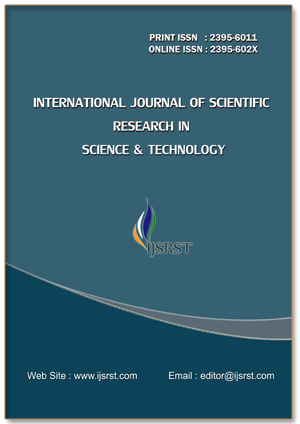PupilHeart: Heart Rate Variability Monitoring via Pupillary Fluctuations on Mobile Devices
DOI:
https://doi.org/10.32628/IJSRST2512339Keywords:
Heart Rate Variability (HRV), electrocardiography (ECG), PupilHeartAbstract
Heart Rate Variability (HRV) is a key physiological indicator associated with autonomic nervous system activity, stress, and cardiovascular health. Traditional HRV measurement techniques, such as electrocardiography (ECG) or photoplethysmography (PPG), require dedicated sensors and contact-based setups. This paper presents PupilHeart, a novel, contactless system that estimates HRV through the analysis of pupillary fluctuations captured by mobile device cameras. Leveraging recent advances in computer vision and physiological computing, PupilHeart extracts micro-variations in pupil diameter from video streams in real-time and correlates these fluctuations with heart rate patterns. The system uses machine learning models to map visual pupil data to HRV metrics such as RMSSD and SDNN. We validate the approach through controlled experiments comparing pupil-derived HRV with standard ECG measurements. Results show a promising correlation, suggesting that pupillary dynamics can serve as a non-invasive proxy for HRV monitoring. PupilHeart offers a scalable and accessible method for physiological monitoring on everyday mobile devices.
📊 Article Downloads
References
Beatty, J., & Lucero-Wagoner, B. (2000). "The pupillary system". Handbook of Psychophysiology, 142-162.
Joshi, S., Li, Y., Kalwani, R. M., & Gold, J. I. (2016). "Relationships between pupil diameter and neuronal activity in the locus coeruleus, colliculi, and cingulate cortex". Neuron, 89(1), 221-234.
Sun, Y., Hu, S., Azorin-Peris, V., Greenwald, S., Chambers, J., & Zhu, Y. (2016). "Noncontact imaging photoplethysmography to effectively access pulse rate variability". Journal of Biomedical Optics, 21(6), 061006.
Wang, C., Wu, S., Li, Y., & Xu, J. (2020). "Stress detection using remote eye-tracking and pupil size analysis". Sensors, 20(9), 2451.
Kim, H. G., Cheon, E. J., Bai, D. S., Lee, Y. H., & Koo, B. H. (2018). "Stress and heart rate variability: A meta-analysis and review of the literature". Psychiatry Investigation, 15(3), 235.
Poh, M. Z., McDuff, D. J., & Picard, R. W. (2011). "Advancements in non-contact, multiparameter physiological measurements using a webcam". IEEE Trans. on Biomedical Engineering, 58(1), 7-11.
Martinez, H. P., & Yannakakis, G. N. (2011). "Emotion-driven reinforcement learning". IEEE Transactions on Affective Computing, 2(2), 50-61.
Reimer, B., et al. (2014). "Pupillometry as a measure of cognitive workload in driving simulation studies". Transportation Research Part F, 22, 1-12.
Loewenfeld, I. E. (1999). The Pupil: Anatomy, Physiology, and Clinical Applications.
Lagun, D., & Agichtein, E. (2015). "Modeling cognitive load in web search". WWW, 23-33.
Downloads
Published
Issue
Section
License
Copyright (c) 2025 International Journal of Scientific Research in Science and Technology

This work is licensed under a Creative Commons Attribution 4.0 International License.
https://creativecommons.org/licenses/by/4.0




